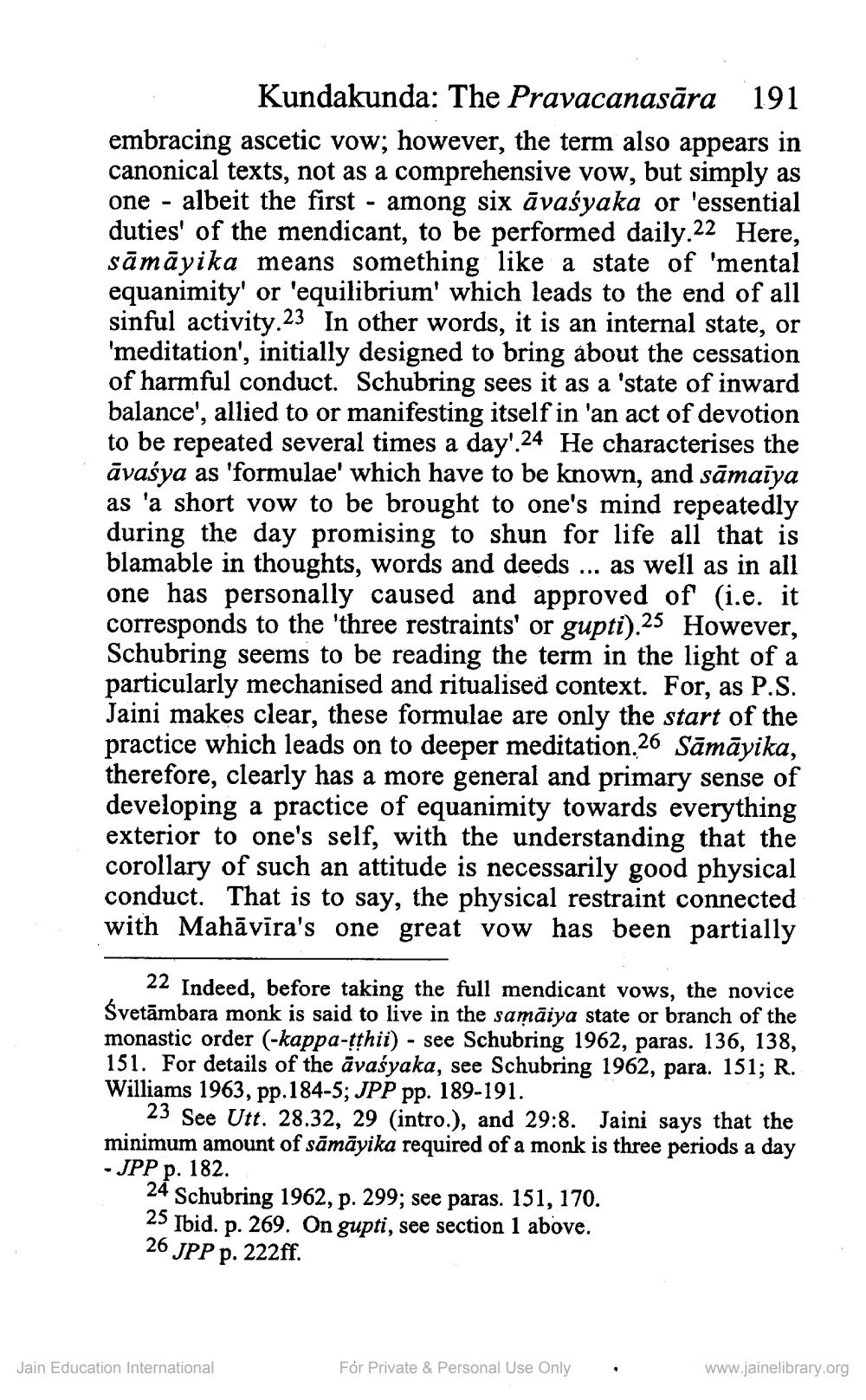________________
Kundakunda: The Pravacanasara
191
one
embracing ascetic vow; however, the term also appears in canonical texts, not as a comprehensive vow, but simply as albeit the first - among six āvaśyaka or 'essential duties' of the mendicant, to be performed daily.22 Here, sāmāyika means something like a state of 'mental equanimity' or 'equilibrium' which leads to the end of all sinful activity.23 In other words, it is an internal state, or 'meditation', initially designed to bring about the cessation of harmful conduct. Schubring sees it as a 'state of inward balance', allied to or manifesting itself in 'an act of devotion to be repeated several times a day'.24 He characterises the āvasya as 'formulae' which have to be known, and sāmaiya as 'a short vow to be brought to one's mind repeatedly during the day promising to shun for life all that is blamable in thoughts, words and deeds ... as well as in all one has personally caused and approved of (i.e. it corresponds to the 'three restraints' or gupti).25 However, Schubring seems to be reading the term in the light of a particularly mechanised and ritualised context. For, as P.S. Jaini makes clear, these formulae are only the start of the practice which leads on to deeper meditation.26 Sāmāyika, therefore, clearly has a more general and primary sense of developing a practice of equanimity towards everything exterior to one's self, with the understanding that the corollary of such an attitude is necessarily good physical conduct. That is to say, the physical restraint connected with Mahāvira's one great vow has been partially
-
22 Indeed, before taking the full mendicant vows, the novice Śvetāmbara monk is said to live in the samãiya state or branch of the monastic order (-kappa-ṭṭhii) - see Schubring 1962, paras. 136, 138, 151. For details of the avaśyaka, see Schubring 1962, para. 151; R. Williams 1963, pp.184-5; JPP pp. 189-191.
23 See Utt. 28.32, 29 (intro.), and 29:8. Jaini says that the minimum amount of sāmāyika required of a monk is three periods a day - JPP p. 182.
24
25
Schubring 1962, p. 299; see paras. 151, 170. Ibid. p. 269. On gupti, see section 1 above. JPP p. 222ff.
26
Jain Education International
For Private & Personal Use Only
www.jainelibrary.org




